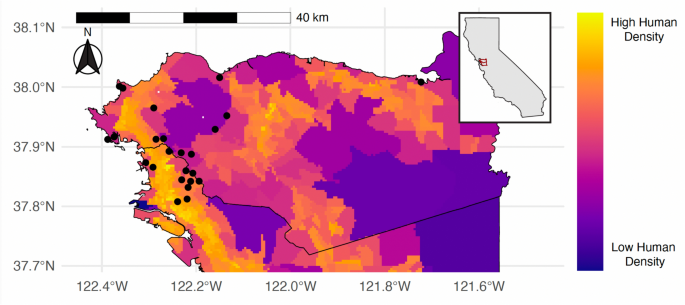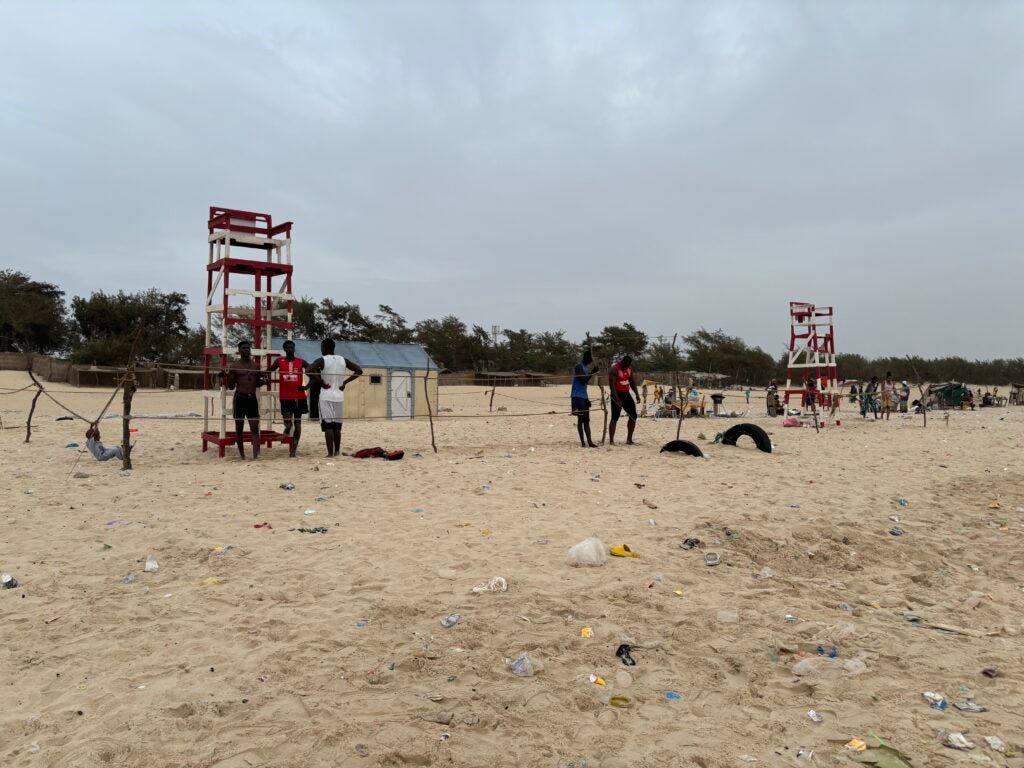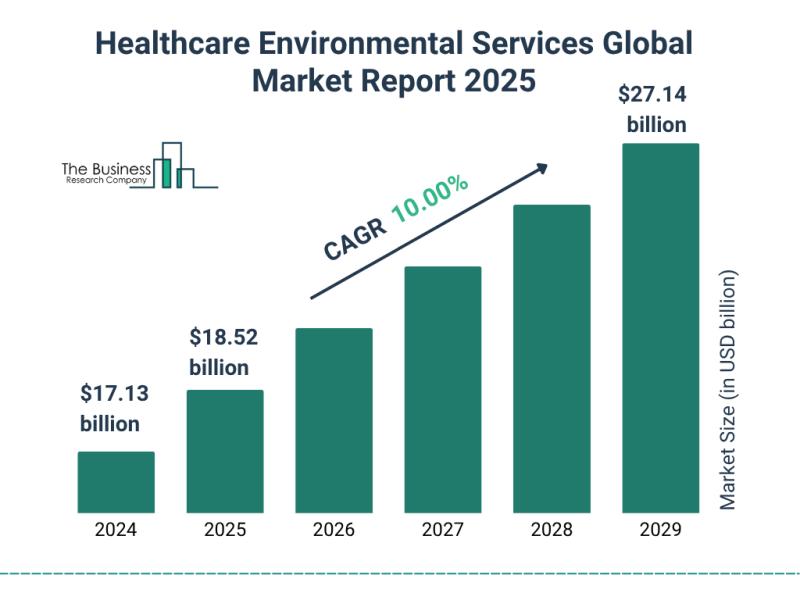Differential effects of human density, environmental health, and group size on urban coyote detection, boldness, and exploration

Fischer, J. D., Schneider, S. C., Ahlers, A. A. & Miller, J. R. Categorizing wildlife responses to urbanization and conservation implications of terminology. Conserv. Biol. 29, 1246–1248 (2015).
Google Scholar
Hahs, A. K. et al. Urbanisation generates multiple trait syndromes for terrestrial animal taxa worldwide. Nat. Commun. 14, 4751 (2023).
Google Scholar
Lowry, H., Lill, A. & Wong, B. B. Behavioural responses of wildlife to urban environments. Biol. Rev. 88, 537–549 (2013).
Google Scholar
Sol, D., Lapiedra, O. & González-Lagos, C. Behavioural adjustments for a life in the city. Anim. Behav. 85, 1101–1112 (2013).
Google Scholar
Collins, S. L. et al. An integrated conceptual framework for long-term social–ecological research. Front. Ecol. Environ. 9, 351–357 (2011).
Google Scholar
Des Roches, S. et al. Socio-eco-evolutionary dynamics in cities. Evol. Appl. 14, 248–267 (2021).
Google Scholar
Caspi, T., Johnson, J. R., Lambert, M. R., Schell, C. J. & Sih, A. Behavioral plasticity can facilitate evolution in urban environments. Trends Ecol. Evol. 37, 1092–1103 (2022).
Google Scholar
Moll, R. J., Killion, A. K., Hayward, M. W. & Montgomery, R. A. A framework for the Eltonian niche of humans. Bioscience 71, 928–941 (2021).
Google Scholar
Møller, A. P. et al. Urban habitats and feeders both contribute to flight initiation distance reduction in birds. Behav. Ecol. 26, 861–865 (2015).
Google Scholar
Nepali, A., Katuwal, H. B., Kc, S., Regmi, S. & Sharma, H. P. Flight initiation distance and bird tolerance to humans in rural and urban habitats. Royal Society Open Science 11, 240332 (2024).
Google Scholar
Uchida, K., Suzuki, K. K., Shimamoto, T., Yanagawa, H. & Koizumi, I. Decreased vigilance or habituation to humans Mechanisms on increased boldness in urban animals. Behav. Ecol. 30, 1583–1590 (2019).
Google Scholar
Carlen, E. J., Li, R. & Winchell, K. M. Urbanization predicts flight initiation distance in feral pigeons (Columba livia) across New York City. Anim. Behav. 178, 229–245 (2021).
Google Scholar
Ritzel, K. & Gallo, T. Behavior change in urban mammals: a systematic review. Front. Ecol. Evol. 8, 576665 (2020).
Google Scholar
Nickel, B. A., Suraci, J. P., Allen, M. L. & Wilmers, C. C. Human presence and human footprint have non-equivalent effects on wildlife spatiotemporal habitat use. Biol. Cons. 241, 108383 (2020).
Google Scholar
Riley, S. P., Sikich, J. A. & Benson, J. F. Big cats in the big city: Spatial ecology of mountain lions in greater Los Angeles. J. Wildl. Manag. 85, 1527–1542 (2021).
Google Scholar
Gámez, S. & Harris, N. C. Living in the concrete jungle: carnivore spatial ecology in urban parks. Ecol. Appl. 31, e02393 (2021).
Google Scholar
Moll, R. J. et al. Humans and urban development mediate the sympatry of competing carnivores. Urban Ecosystems 21, 765–778 (2018).
Google Scholar
Berger, J. Fear, human shields and the redistribution of prey and predators in protected areas. Biol. Let. 3, 620–623 (2007).
Google Scholar
Møller, A. P. Urban areas as refuges from predators and flight distance of prey. Behav. Ecol. 23, 1030–1035 (2012).
Google Scholar
Putman, B. J. & Tippie, Z. A. Big city living: a global meta-analysis reveals positive impact of urbanization on body size in lizards. Front. Ecol. Evol. 8, 580745 (2020).
Google Scholar
Agyeman, J., Schlosberg, D., Craven, L. & Matthews, C. Trends and directions in environmental justice: from inequity to everyday life, community, and just sustainabilities. Annu. Rev. Environ. Resour. 41, 321–340 (2016).
Google Scholar
Hillier, A. E. Redlining and the home owners’ loan corporation. J. Urban Hist. 29, 394–420 (2003).
Google Scholar
Markley, S. Federal ‘redlining’maps: A critical reappraisal. Urban Studies 61, 195–213 (2024).
Google Scholar
Lane, H. M., Morello-Frosch, R., Marshall, J. D. & Apte, J. S. Historical redlining is associated with present-day air pollution disparities in US cities. Environ. Sci. Technol. Lett. 9, 345–350 (2022).
Google Scholar
Locke, D. H. et al. Residential housing segregation and urban tree canopy in 37 US Cities. npj Urban Sustain 1, 1–9 (2021).
Google Scholar
Estien, C. O., Wilkinson, C. E., Morello-Frosch, R. & Schell, C. J. Historical redlining is associated with disparities in environmental quality across California. Environ. Sci. Technol. Lett. 11, 54–59 (2024).
Google Scholar
Nelson-Olivieri, J. R. et al. Inequalities in noise will affect urban wildlife. Nature Ecology & Evolution 8, 163–174 (2024).
Google Scholar
Salazar-Miranda, A., Conzelmann, C., Phan, T. & Hoffman, J. Long-term effects of redlining on climate risk exposure. Nature Cities 1, 436–444 (2024).
Google Scholar
Wood, E. M. et al. Historical racial redlining and contemporary patterns of income inequality negatively affect birds, their habitat, and people in Los Angeles, California. Ornithological Applications duad044 (2023) https://doi.org/10.1093/ornithapp/duad044.
Estien, C. O., Fidino, M., Wilkinson, C. E., Morello-Frosch, R. & Schell, C. J. Historical redlining is associated with disparities in wildlife biodiversity in four California cities. Proc. Natl. Acad. Sci. 121, e2321441121 (2024).
Google Scholar
Lagesson, A. et al. Fish on steroids: Temperature-dependent effects of 17β-trenbolone on predator escape, boldness, and exploratory behaviors. Environ. Pollut. 245, 243–252 (2019).
Google Scholar
Renick, V. C., Weinersmith, K., Vidal-Dorsch, D. E. & Anderson, T. W. Effects of a pesticide and a parasite on neurological, endocrine, and behavioral responses of an estuarine fish. Aquat. Toxicol. 170, 335–343 (2016).
Google Scholar
Tüzün, N., Müller, S., Koch, K. & Stoks, R. Pesticide-induced changes in personality depend on the urbanization level. Anim. Behav. 134, 45–55 (2017).
Google Scholar
Zala, S. M. & Penn, D. J. Abnormal behaviours induced by chemical pollution: a review of the evidence and new challenges. Anim. Behav. 68, 649–664 (2004).
Google Scholar
Flahr, L. M., Michel, N. L., Zahara, A. R., Jones, P. D. & Morrissey, C. A. Developmental exposure to Aroclor 1254 alters migratory behavior in juvenile European starlings (Sturnus vulgaris). Environ. Sci. Technol. 49, 6274–6283 (2015).
Google Scholar
Gorissen, L., Snoeijs, T., Duyse, E. V. & Eens, M. Heavy metal pollution affects dawn singing behaviour in a small passerine bird. Oecologia 145, 504–509 (2005).
Google Scholar
Grunst, A. S. et al. Variation in personality traits across a metal pollution gradient in a free-living songbird. Sci. Total Environ. 630, 668–678 (2018).
Google Scholar
Grunst, A. S. et al. An important personality trait varies with blood and plumage metal concentrations in a free-living songbird. Environ. Sci. Technol. 53, 10487–10496 (2019).
Google Scholar
Jacquin, L., Petitjean, Q., Côte, J., Laffaille, P. & Jean, S. Effects of pollution on fish behavior, personality, and cognition: some research perspectives. Front. Ecol. Evol. 8, 86 (2020).
Google Scholar
Saaristo, M. et al. Direct and indirect effects of chemical contaminants on the behaviour, ecology and evolution of wildlife. Proc. R. Soc. B 285, 20181297 (2018).
Google Scholar
Klaminder, J. et al. Drug-induced behavioral changes: using laboratory observations to predict field observations. Front. Environ. Sci. 4, 81 (2016).
Google Scholar
Swank, A., Wang, L., Ward, J. & Schoenfuss, H. Multigenerational effects of a complex urban contaminant mixture on the behavior of larval and adult fish in multiple fitness contexts. Sci. Total Environ. 791, 148095 (2021).
Google Scholar
Hentati, Y. et al. Environmental contamination predicts mammal diversity and mesocarnivore activity in the Seattle-Tacoma metro area. Urban Ecosystems. 28, 1–24 (2025).
Google Scholar
Baxter-Gilbert, J., Riley, J. L. & Whiting, M. J. Bold new world: urbanization promotes an innate behavioral trait in a lizard. Behav. Ecol. Sociobiol. 73, 1–10 (2019).
Google Scholar
Lapiedra, O., Chejanovski, Z. & Kolbe, J. J. Urbanization and biological invasion shape animal personalities. Glob. Change Biol. 23, 592–603 (2017).
Google Scholar
Pellitteri-Rosa, D. et al. Urbanization affects refuge use and habituation to predators in a polymorphic lizard. Anim. Behav. 123, 359–367 (2017).
Google Scholar
Parsons, A. W. et al. The effect of urbanization on spatiotemporal interactions between gray foxes and coyotes. Ecosphere 13, e3993 (2022).
Google Scholar
Wilkinson, C. E., Quinn, N., Eng, C. & Schell, C. J. Environmental health and societal wealth predict movement patterns of an urban carnivore. Ecol. Lett. 28, e70088 (2025).
Google Scholar
Bateman, P. W. & Fleming, P. A. Big city life: carnivores in urban environments. J. Zool. 287, 1–23 (2012).
Google Scholar
Breck, S. W., Poessel, S. A., Mahoney, P. & Young, J. K. The intrepid urban coyote: a comparison of bold and exploratory behavior in coyotes from urban and rural environments. Sci. Rep. 9, 2104 (2019).
Google Scholar
Brooks, J., Kays, R. & Hare, B. Coyotes living near cities are bolder: implications for dog evolution and human-wildlife conflict. Behaviour 157, 289–313 (2020).
Google Scholar
Jensen, A. J., Marneweck, C. J., Kilgo, J. C. & Jachowski, D. S. Coyote diet in North America: geographic and ecological patterns during range expansion. Mammal Rev. 52, 480–496 (2022).
Google Scholar
Murray, M. H. & St. Clair, C. C. Individual flexibility in nocturnal activity reduces risk of road mortality for an urban carnivore. Behav. Ecol. 26, 1520–1527 (2015).
Google Scholar
Farr, J. J. et al. A ten-year community reporting database reveals rising coyote boldness and associated human concern in Edmonton Canada. Ecol. Soc. 28, 19 (2023).
Google Scholar
Poessel, S. A. et al. Patterns of human–coyote conflicts in the Denver Metropolitan Area. J. Wildl. Manag. 77, 297–305 (2013).
Google Scholar
Wilkinson, C. E., Caspi, T., Stanton, L. A., Campbell, D. & Schell, C. J. Coexistence across space and time: Social-ecological patterns within a decade of human-coyote interactions in San Francisco. People and Nature 5, 2158–2177 (2023).
Google Scholar
Heyser, C. J. & Chemero, A. Novel object exploration in mice: not all objects are created equal. Behav. Proc. 89, 232–238 (2012).
Google Scholar
Mettke-Hofmann, C., Ebert, C., Schmidt, T., Steiger, S. & Stieb, S. Personality traits in resident and migratory warbler species. Behaviour 142, 1357–1375 (2005).
Google Scholar
Golden Beam, E. R., Berger, J., Breck, S. W., Schell, C. J. & Lambert, J. E. Habituation and tolerance in coyotes (Canis latrans), a flexible urban predator. Wildlife Letters. 1, 153–162 (2023).
Google Scholar
Morton, F. B. et al. Urban foxes are bolder but not more innovative than their rural conspecifics. Anim. Behav. 203, 101–113 (2023).
Google Scholar
Robertson, K. E. Boldness behavior and chronic stress in free-ranging, urban coyotes (Canis latrans). Ohio State University (2018).
Wurth, A. Behavior and Genetic Aspects of Boldness and Aggression in Urban Coyotes (Canis Latrans). (The Ohio State University, 2018).
Open Data Network. https://www.opendatanetwork.com/.
Weather Spark. The Weather Year Round Anywhere on Earth. https://weatherspark.com/.
Gallo, T., Fidino, M., Lehrer, E. W. & Magle, S. B. Mammal diversity and metacommunity dynamics in urban green spaces: implications for urban wildlife conservation. Ecol. Appl. 27, 2330–2341 (2017).
Google Scholar
Magle, S. B. et al. Wealth and urbanization shape medium and large terrestrial mammal communities. Glob. Change Biol. 27, 5446–5459 (2021).
Google Scholar
Haight, J. D. et al. Urbanization, climate and species traits shape mammal communities from local to continental scales. Nature Ecology & Evolution 7, 1654–1666 (2023).
Google Scholar
U.S. Census Bureau. Annual Estimates of the Resident Population for the United States, Regions, States, District of Columbia, and Puerto Rico: April 1, 2020 to July 1, 2022 (NST-EST2022-POP). (2022).
California Office of Environmental Health Hazard Assessment. CalEnviroScreen 4.0. (2021).
Lombardi, J. V., Comer, C. E., Scognamillo, D. G. & Conway, W. C. Coyote, fox, and bobcat response to anthropogenic and natural landscape features in a small urban area. Urban Ecosystems 20, 1239–1248 (2017).
Google Scholar
Mills, K. L. & Harris, N. C. Humans disrupt access to prey for large African carnivores. Elife 9, e60690 (2020).
Google Scholar
Friard, O. & Gamba, M. BORIS: a free, versatile open-source event-logging software for video/audio coding and live observations. Methods Ecol. Evol. 7, 1325–1330 (2016).
Google Scholar
Gisev, N., Bell, J. S. & Chen, T. F. Interrater agreement and interrater reliability: key concepts, approaches, and applications. Res. Social Adm. Pharm. 9, 330–338 (2013).
Google Scholar
Kuznetsova, A., Brockhoff, P. B. & Christensen, R. H. B. Package ‘lmertest’. R package version 2, 734 (2015).
Magnusson, A. et al. Package ‘glmmtmb’. R Package Version 0.2. 0 25, (2017).
Anderson, D. R. & Burnham, K. P. Avoiding pitfalls when using information-theoretic methods. The Journal of wildlife management. 912–918 (2002).
Estien, C. O. Queering Ecology (Re)Constructing Ecology as a Home to Better Understand the Social-Ecological Pressures Wildlife Face. Catalyst: Feminism, Theory, Technoscience. 11, 1–20 (2025).
Google Scholar
Niesner, C. A. At Home With Coyotes: An Exploration of Human-Coyote Relations in the Los Angeles ‘Ecology of Selves’ (University of California, 2023).
Breck, S. W., Poessel, S. A. & Bonnell, M. A. Evaluating lethal and nonlethal management options for urban coyotes. Human-Wildlife Interactions 11, 133–145 (2017).
Nardone, A., Rudolph, K. E., Morello-Frosch, R. & Casey, J. A. Redlines and Greenspace: The Relationship between Historical Redlining and 2010 Greenspace across the United States. Environ. Health Perspect. 129, 017006 (2021).
Google Scholar
Mettler, A. E. & Shivik, J. A. Dominance and neophobia in coyote (Canis latrans) breeding pairs. Appl. Anim. Behav. Sci. 102, 85–94 (2007).
Google Scholar
Stanton, L. A. et al. Variation in reversal learning by three generalist mesocarnivores. Anim. Cogn. 24, 555–568 (2021).
Google Scholar
Windberg, L. A. Coyote responses to visual and olfactory stimuli related to familiarity with an area. Can. J. Zool. 74, 2248–2253 (1996).
Google Scholar
Schell, C. J., Young, J. K., Lonsdorf, E. V., Santymire, R. M. & Mateo, J. M. Parental habituation to human disturbance over time reduces fear of humans in coyote offspring. Ecol. Evol. 8, 12965–12980 (2018).
Google Scholar
Cox, D. T. & Gaston, K. J. Human–nature interactions and the consequences and drivers of provisioning wildlife. Philosophical Transactions of the Royal Society B: Biological Sciences 373, 20170092 (2018).
Google Scholar
Young, J. K., Hammill, E. & Breck, S. W. Interactions with humans shape coyote responses to hazing. Sci Rep 9, 20046 (2019).
Google Scholar
Eapen, A. P. Human-Wildlife Coexistence with Coyotes in Los Angeles County, CA and Cook County, Il. (State University of New York at Albany, 2022).
Timm, R. M. & Baker, R. O. A history of urban coyote problems. Proceedings 12th Wildlife Damage Management Conference 272–286 (2007).
Prugh, L. R. et al. The rise of the mesopredator. Bioscience 59, 779–791 (2009).
Google Scholar
Garcia, A. C., Parsons, M. A. & Young, J. K. Effects of early-life experience on innovation and problem-solving in captive coyotes. Behav. Ecol. Sociobiol. 76, 141 (2022).
Google Scholar
Young, J. K., Touzot, L. & Brummer, S. P. Persistence and conspecific observations improve problem-solving abilities of coyotes. PLoS ONE 14, e0218778 (2019).
Google Scholar
van der Marel, A., Waterman, J. M. & López-Darias, M. Barbary ground squirrels do not have a sentinel system but instead synchronize vigilance. Behav. Ecol. Sociobiol. 75, 153 (2021).
Google Scholar
Bednekoff, P. A. Mutualism among safe, selfish sentinels: a dynamic game. Am. Nat. 150, 373–392 (1997).
Google Scholar
Pays, O. et al. Prey synchronize their vigilant behaviour with other group members. Proceedings of the Royal Society B: Biological Sciences. 274, 1287–1291 (2007).
Google Scholar
Grunst, A. S., Grunst, M. L., Pinxten, R. & Eens, M. Personality and plasticity in neophobia levels vary with anthropogenic disturbance but not toxic metal exposure in urban great tits: urban disturbance, metal pollution and neophobia. Sci. Total Environ. 656, 997–1009 (2019).
Google Scholar
Kobiela, M. E., Cristol, D. A. & Swaddle, J. P. Risk-taking behaviours in zebra finches affected by mercury exposure. Anim. Behav. 103, 153–160 (2015).
Google Scholar
Swaddle, J. P. et al. Exposure to dietary mercury alters cognition and behavior of zebra finches. Current Zoology 63, 213–219 (2017).
Google Scholar
Apte, J. S. & Manchanda, C. High-resolution urban air pollution mapping. Science 385, 380–385 (2024).
Google Scholar
Caubel, J. J., Cados, T. E., Preble, C. V. & Kirchstetter, T. W. A distributed network of 100 black carbon sensors for 100 days of air quality monitoring in West Oakland, California. Environ. Sci. Technol. 53, 7564–7573 (2019).
Google Scholar
Ouyang, J. Q. et al. A new framework for urban ecology: an integration of proximate and ultimate responses to anthropogenic change. Integr. Comp. Biol. 58, 915–928 (2018).
Google Scholar
Moll, R. J. et al. What does urbanization actually mean? A framework for urban metrics in wildlife research. J. Appl. Ecol. 56, 1289–1300 (2019).
Google Scholar
link





